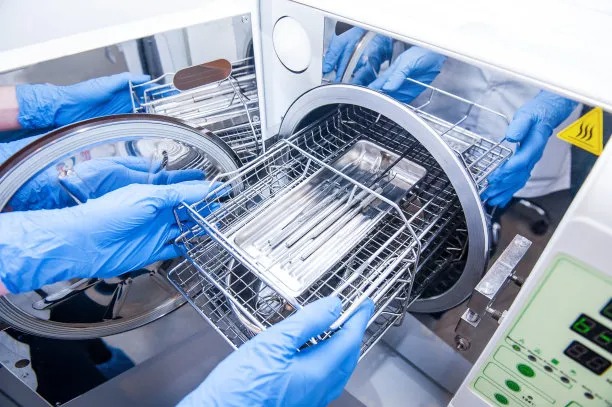Essential Guidelines and Precautions to Ensure Success in Root Canal Treatment Procedures for Optimal Patient Safety
Summary: Root canal treatment is an essential procedure for preserving teeth and relieving dental pain. To ensure optimal outcomes and enhance patient safety during these intricate operations, dental professionals must adhere to a set of essential guidelines and precautions. This article elaborates on vital strategies for preparing the treatment environment, utilizing appropriate dental technologies, implementing effective patient management techniques, and maintaining continuous aftercare. By prioritizing these areas, dental practitioners can greatly improve the success rate of root canal treatments and enhance overall patient satisfaction.
1. Preparing the Treatment Environment

Ensuring a sterile and organized treatment environment is crucial for the success of root canal procedures. An aseptic setting not only minimizes the risk of infections but also enhances the efficiency of the treatment. Dental professionals should meticulously clean and sterilize all instruments and equipment before commencing the procedure. This includes utilizing autoclaves for sterilization and ensuring intraoral barriers are effectively deployed.
Moreover, proper lighting and adequate suction systems should be in place. Strong illumination allows practitioners to visualize the complexities of the root canal system effectively, while suction devices help maintain a clear view by removing saliva and debris. An organized workspace reduces clutter and distraction, which directly enhances the focus and precision of the dental team.
Additionally, its essential to prepare the patient for treatment. Comprehensive preoperative assessments, including medical history checks and diagnosis confirmations through imaging, will help anticipate any potential complications, ensuring a streamlined procedure. By focusing on these preparatory steps, dental professionals can significantly enhance patient safety and treatment effectiveness.
2. Utilizing Appropriate Dental Technologies
The integration of modern dental technologies plays a pivotal role in the success of root canal treatments. Innovative tools like cone beam computed tomography (CBCT) provide three-dimensional images of the tooths internal structures, allowing for precise diagnosis and treatment planning. This advanced imaging technique enhances the identification of anatomical variations in root canal systems, reducing the chances of missed canals.
Furthermore, utilizing rotary endodontic instruments has revolutionized root canal treatment by improving efficiency and reducing procedural time. These instruments are designed to provide better shaping of the canal and minimize the risk of procedural errors. Moreover, they allow for smoother instrumentation, which contributes to superior cleaning and shaping of the canal space.
Finally, the adoption of electronic apex locators aids in determining the working length of the canal accurately. This technology minimizes the likelihood of over-instrumentation or under-instrumentation, directly contributing to better outcomes and improved patient safety. In summary, embracing these advanced dental technologies can greatly enhance the precision and success of root canal procedures.
3. Effective Patient Management Techniques
Effective communication with patients is integral to the overall success of root canal treatments. Practitioners should explain the procedure, answer queries, and address any concerns to alleviate anxiety and foster trust. This level of patient engagement not only enhances the patient experience but also improves compliance during treatment, leading to better outcomes.
Additionally, the use of anesthesia must be carefully managed. Administering adequate local anesthesia is critical to ensuring that patients remain comfortable throughout the procedure. Dentists should regularly check on the patient’s comfort levels and adjust the anesthesia as necessary to maintain a pain-free experience.
Moreover, post-operative instructions should be detailed to ensure the patient understands how to care for their teeth and manage any discomfort post-treatment. Clear guidance on pain management, dietary restrictions, and follow-up appointments plays a significant role in preventing complications and ensuring a smooth recovery.
4. Maintaining Continuous Aftercare
Aftercare is a vital component of ensuring the success of root canal treatments. Patients should be closely monitored after the procedure to assess healing and detect any signs of complications. Follow-up appointments allow dental professionals to evaluate the effectiveness of the treatment and ensure proper recovery.
Furthermore, educating patients on maintaining their oral hygiene post-treatment is crucial. Providing tailored flossing and brushing techniques can help prevent future dental issues. Regular check-ups and cleanings should be emphasized, as they play a vital role in the long-term success of the treated tooth and overall oral health.
In addition, dentists should be prepared to address any complications should they arise. This includes being ready to manage cases of persistent pain or swelling effectively and efficiently. Having a clear protocol for potential complications reinforces patient safety and demonstrates the dental professionals commitment to delivering comprehensive care.
Summary:
The guidelines and precautions highlighted in this article underscore the importance of a systematic approach to root canal treatment. By focusing on environment preparation, employing advanced technologies, managing patient interactions effectively, and ensuring robust aftercare, dental practitioners can optimize treatment outcomes. These strategies not only enhance patient safety but also improve the overall success rates of root canal procedures, ensuring a more positive experience for patients.
This article is compiled by Vickong Dental and the content is for reference only.



